Understanding how to do the stitches correctly makes the kits a lot easier to do. Here’s a compilation of the stitches that are fairly common to ornament kits with the best explanations I’ve seen.
Stitches used for embroidery on the appliques:
| Stem Stich |  |
Also called “Outline stitch”. Essentially the same as the backstitch except wrong-side out so the bulk of the thread is on the front. Pay attention to which side of the thread you poke the needle through–if its inconsistent you’ll get the “twist” reversing directions here and there. One way will be with the natural direction of the twisting of the thread fibers and make it look like a single thread lying on the fabric, the other way will accentuate the stitch length each stitch. |
| Backstitch | 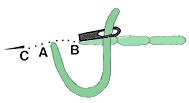 |
Basic stitch, but used a lot less frequently than the stem-stitch. But if you want a stripe with a lighter “weight” this stitch can be handy. |
| Satin Stitch | 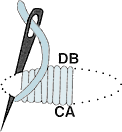 |
This stitch is used on a lot of the kits, particularly for the cheeks of people. The directions in many of the kits are less than clear on how to do this stitch, so pay attention:
If you’re filling in a a round or oval shape, start in the widest part (in the direction your stitches will take, fill in the stiches all the way to one side, return to the middle and then stitch to the other side. If you start on one end and work straight to the other it gets really crooked.
|
| Lazy-Daisy | 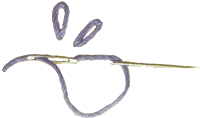  |
Less frequent. |
Here’s a scan from an older kit of how to a number of the embroidery stitches in that particular kit including in addition to to most of the above a french knot (which I have yet to find come up in any other kit I’ve worked with).
Stitches used to attach appliques together:
Applique used as a noun refers to the pieces of felt that you are attaching together. Applique as a verb refers to the stitch used to attach one applique to the top of another. There’s more than one way to do this; just use whichever stitch you think looks best. The following are good stitches for this.
| Blind Stitch | 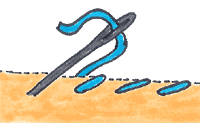 |
Alternately called slip-stich. This one is particularly good for things like attaching the fronts and backs of limbs together as it comes out very smooth.
Come up from back side, go through felt at an angle, catching the just bottom edge of the applique as shown. Stitches should be about 1/6″ apart. If you stiches are small the work will be almost invisible. –Titan Instruction Sheet |
| Straight Stich | 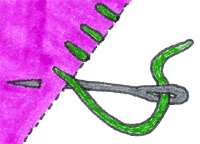 |
space about 1/8 to 1/6th of an inch apart.
This stitch is actually mechanically very similar to the blind stitch except you hold the needle at a very different angle. If you are attaching a small applique to a larger applique this one would be my stitch of choice. |
| Buttonhole Stitch | 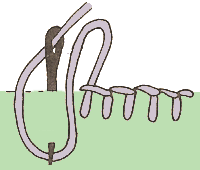 |
Alternate stitch to use around the edges. This stitch is more “decorative” and is great if you want to use a larger stitch (1/4″) in a contrasting color around the edges. |

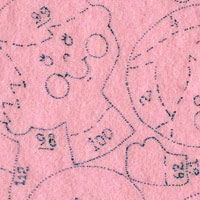 Also, if you are using pre-stamped felt, or have non-washable lines marking your embroidery area, make sure you make your stiches go all the way to the outside edge of the line, so that the line is completely hidden.
Also, if you are using pre-stamped felt, or have non-washable lines marking your embroidery area, make sure you make your stiches go all the way to the outside edge of the line, so that the line is completely hidden.